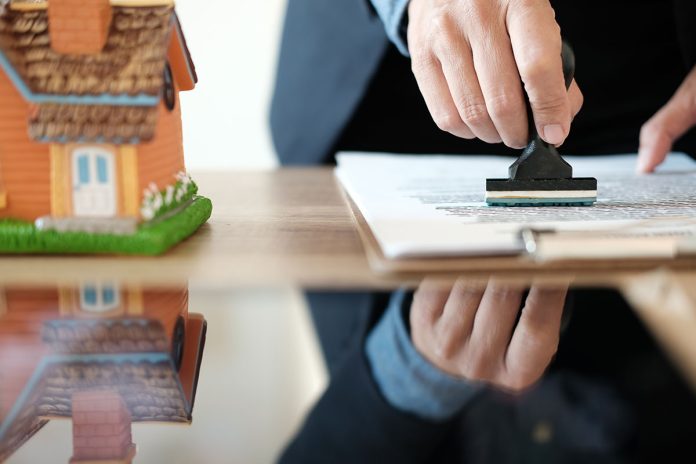Buying a home is exciting, but stamp duty can be a nasty surprise if you’re not prepared for it. With changes to stamp duty thresholds coming into effect from April 1, 2025, it’s more important than ever to understand how much you’ll need to pay. Whether you’re a first-time buyer, moving home, or purchasing an additional property, this guide will break down the latest rules, potential workarounds, and whether you can add stamp duty to your mortgage.
What Is Stamp Duty?
Stamp Duty Land Tax (SDLT) is a tax you pay when buying property in England and Northern Ireland. The amount you owe depends on the purchase price and your buyer status (first-time buyer, home mover, or additional property owner).
Rather than working out the tax manually—where different portions of the property price are taxed at different rates—it’s much easier to use a stamp duty calculator. This saves you from having to break down each tax band and do the maths yourself.
Stamp Duty Rates as of April 2025
First-Time Buyers
Good news and bad news. The government has changed the thresholds, and while first-time buyers still get relief, it’s not as generous as it was:
- 0% on the first £300,000 (previously £425,000)
- 5% on the portion between £300,001 and £500,000
- If the property is over £500,000, you pay standard rates (relief doesn’t apply)
Example: Buying at £400,000?
- 0% on the first £300,000 = £0
- 5% on the next £100,000 = £5,000
- Total stamp duty: £5,000
Previously, this would have been tax-free, so it’s a big change!
Home Movers (Standard Buyers)
If you’ve owned a home before, or you’re not classed as a first-time buyer, here’s what you’ll pay:
- 0% up to £125,000 (was £250,000)
- 2% from £125,001 to £250,000
- 5% from £250,001 to £925,000
- 10% from £925,001 to £1.5m
- 12% on anything above £1.5m
Additional Properties (Buy-to-Lets, Second Homes, Holiday Homes, etc.)
If you’re buying an additional property, there’s an extra 5% surcharge on top of the standard rates.
⸻
What If You’re Buying With Someone Who’s Owned Before?
Here’s where it gets interesting—and potentially expensive.
If one of you is a first-time buyer but the other has owned before, you don’t qualify for first-time buyer relief. Instead, you pay the standard home mover rates.
If one of you owns an additional property, you pay the higher additional property surcharge on the entire purchase—even if the other person is a first-time buyer.
Can You Add Stamp Duty to Your Mortgage?
Potentially, yes—but it’s not always the best idea.
You can’t borrow stamp duty separately, but you can reduce your deposit and increase your mortgage to cover it. The catch? It could affect your loan-to-value (LTV) and mortgage options.
Example:
- You’re buying for £300,000
- You have a £30,000 deposit (10%)
- Your stamp duty is £5,000
If you add stamp duty into your mortgage, you now only have £25,000 deposit, which is below 10%. This could:
- Push you into a higher mortgage rate bracket
- Affect affordability assessments
- Reduce your mortgage options
If you have the affordability and enough deposit left, it can work. But it’s always best to check with a mortgage broker to see what impact it has.
⸻
How to Avoid Paying Stamp Duty (Legally!)
- Joint Borrower, Sole Proprietor (JBSP)
If one of you has owned before and the other is a first-time buyer, you could structure the purchase so that only the first-time buyer’s name is on the property title. The other person can still be on the mortgage (helping with affordability) but wouldn’t legally own the home—so stamp duty is calculated only on the first-time buyer’s status.
Warning: This means the non-owner has no legal ownership rights, so get legal advice before going down this route.
- Reclaiming the 5% Additional Property Surcharge
If you’re paying the extra 5% stamp duty on an additional home but you sell your previous main residence within three years, you can apply for a refund of the surcharge. This is particularly useful if you’re in a chain where you need to buy before selling.
⸻
Get the Right Advice
Stamp duty rules can be complicated, especially when buying with someone else or juggling multiple properties. If you’re unsure, speak to a mortgage broker like Strive Mortgages or The Mortgage Pod. They’ll help you navigate the best way to structure your purchase and find mortgage options that work for you.
For legal and tax advice, a solicitor or accountant can make sure you’re fully aware of the implications before making any decisions.
⸻
Final Thoughts
Stamp duty isn’t the most exciting part of buying a home, but understanding the latest 2025 rules can help you avoid unexpected costs. If you’re a first-time buyer, you still get relief, but it’s less generous than before. If you already own, the standard and additional property rates could impact your budget significantly.
Need advice? Get in touch with a mortgage broker to discuss your options—because nobody wants to pay more tax than they have to!



 Bitcoin
Bitcoin  Ethereum
Ethereum  Tether
Tether  XRP
XRP  Solana
Solana  USDC
USDC  Cardano
Cardano  TRON
TRON  Lido Staked Ether
Lido Staked Ether  Avalanche
Avalanche  Toncoin
Toncoin